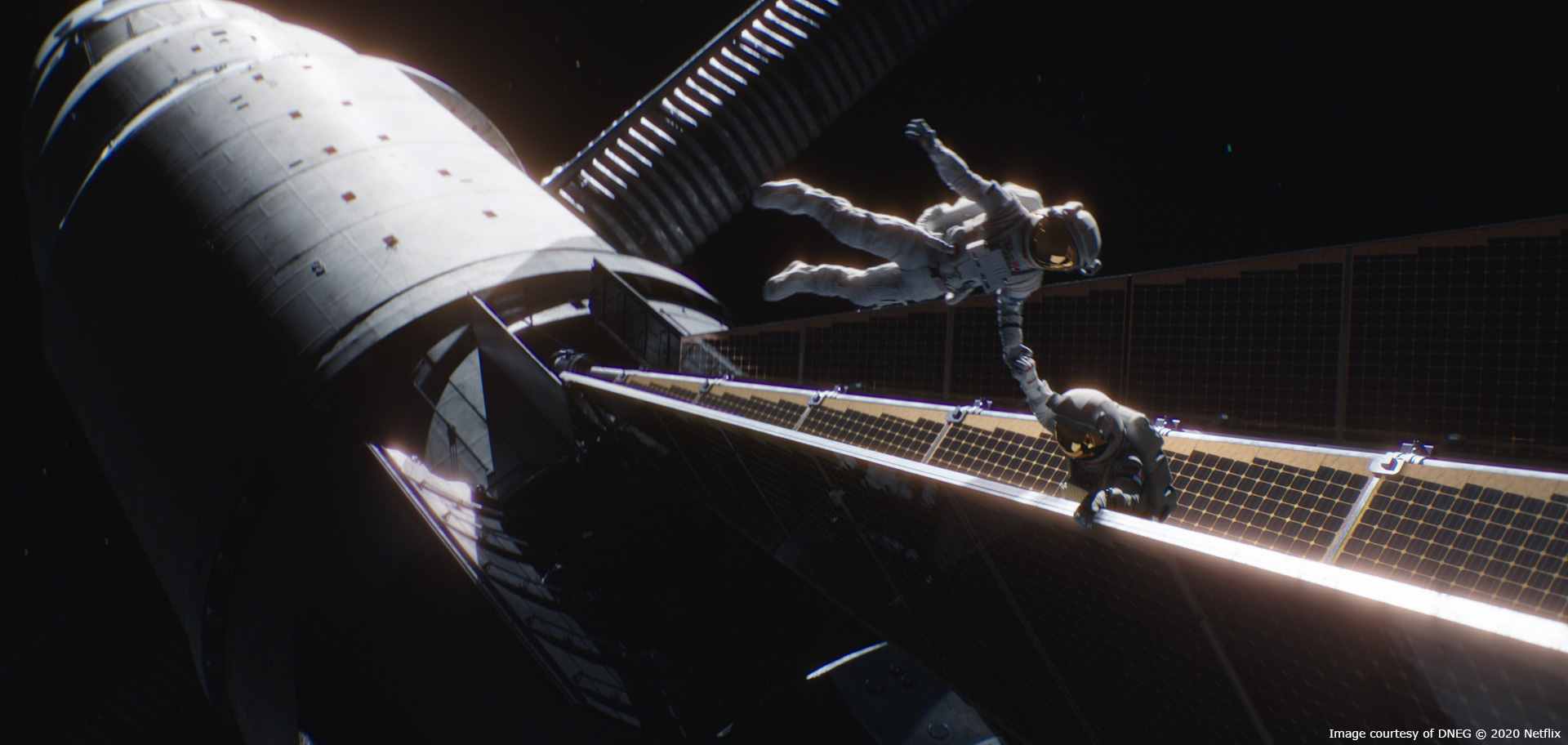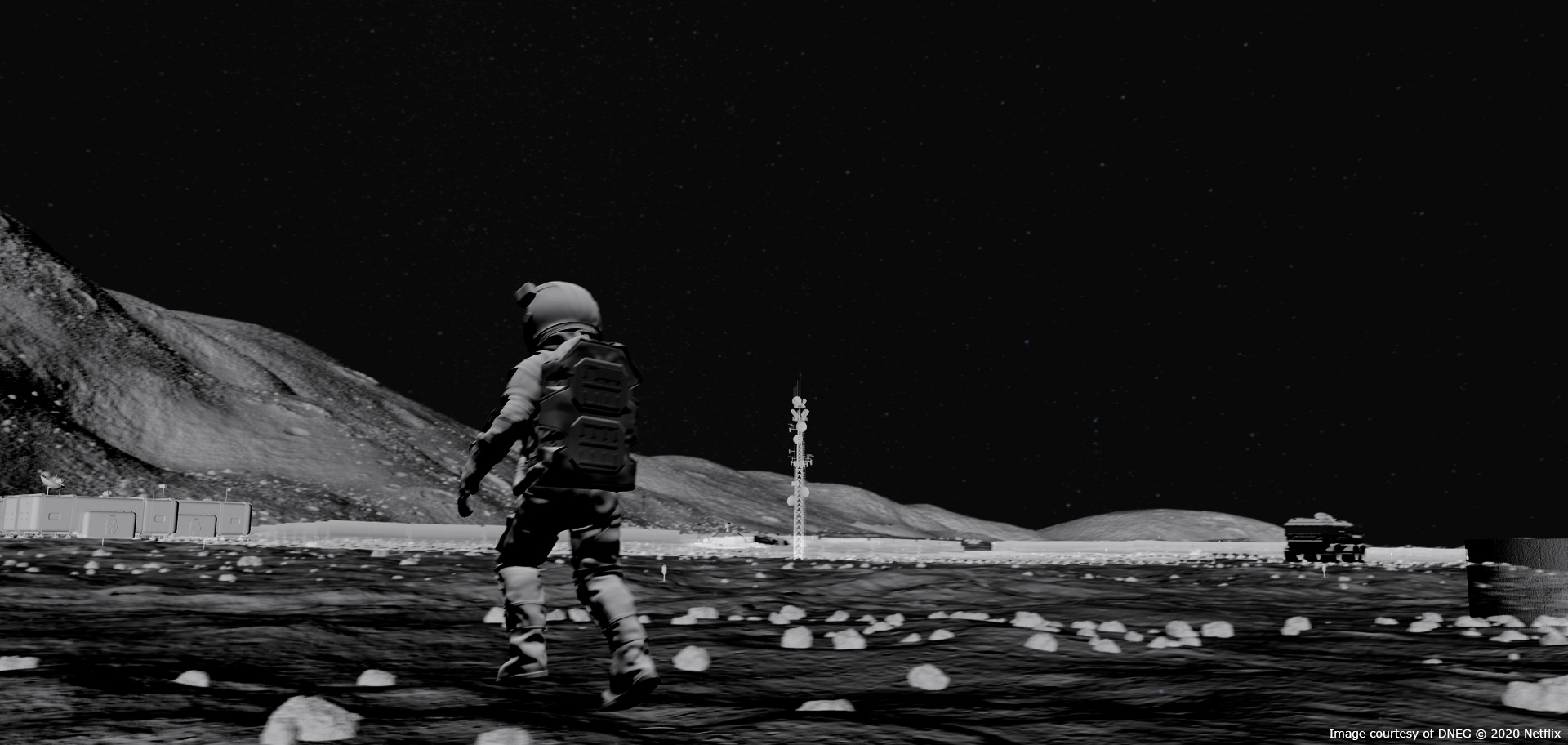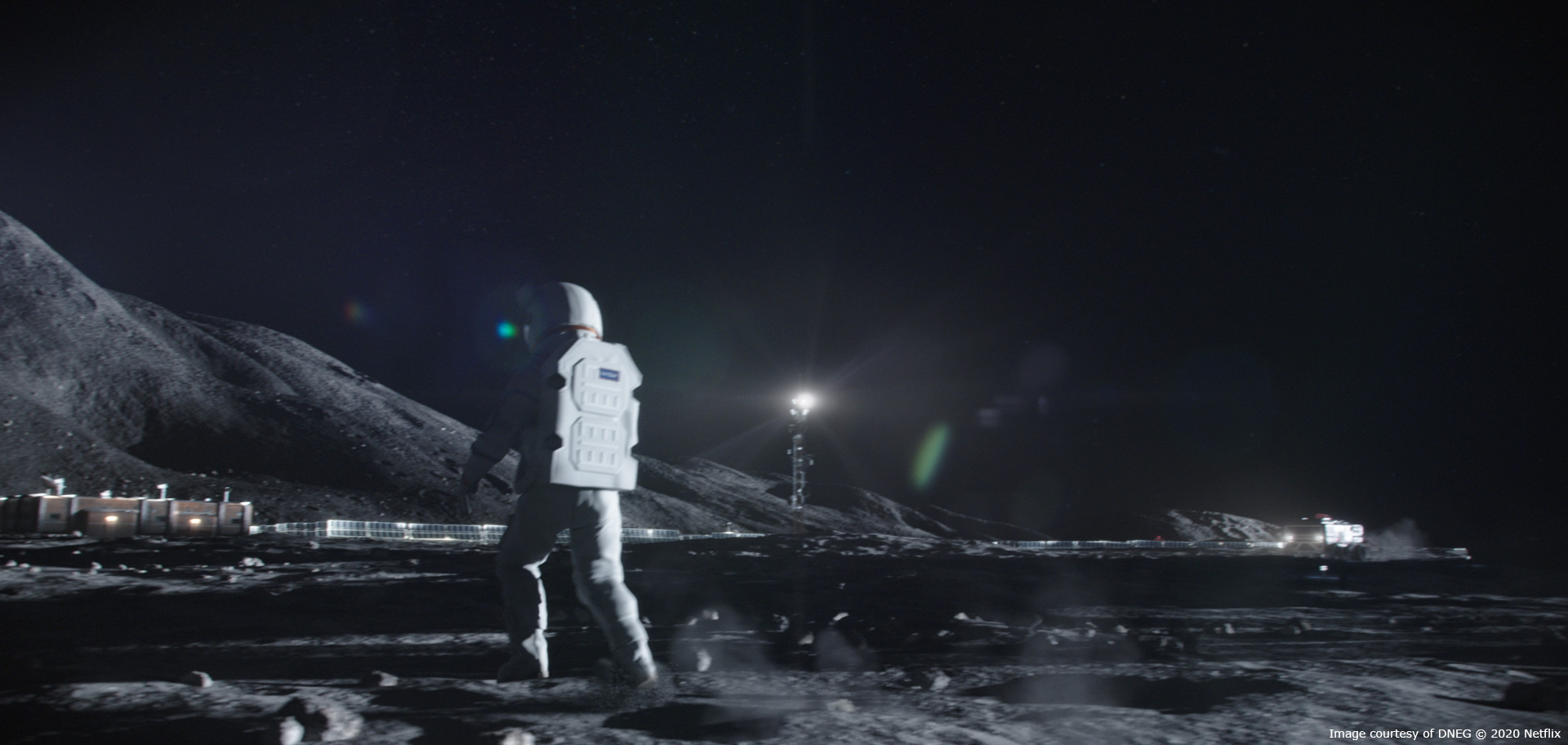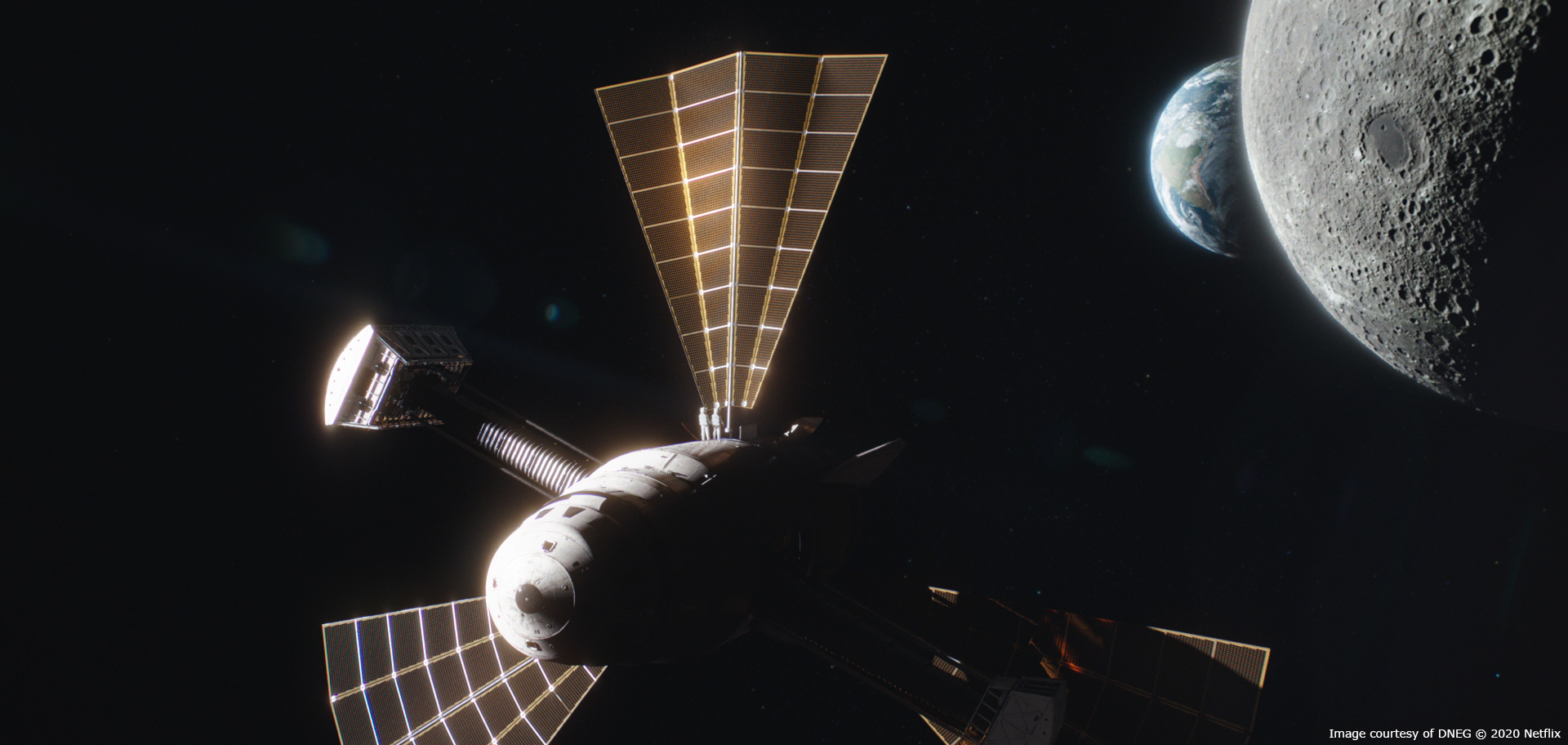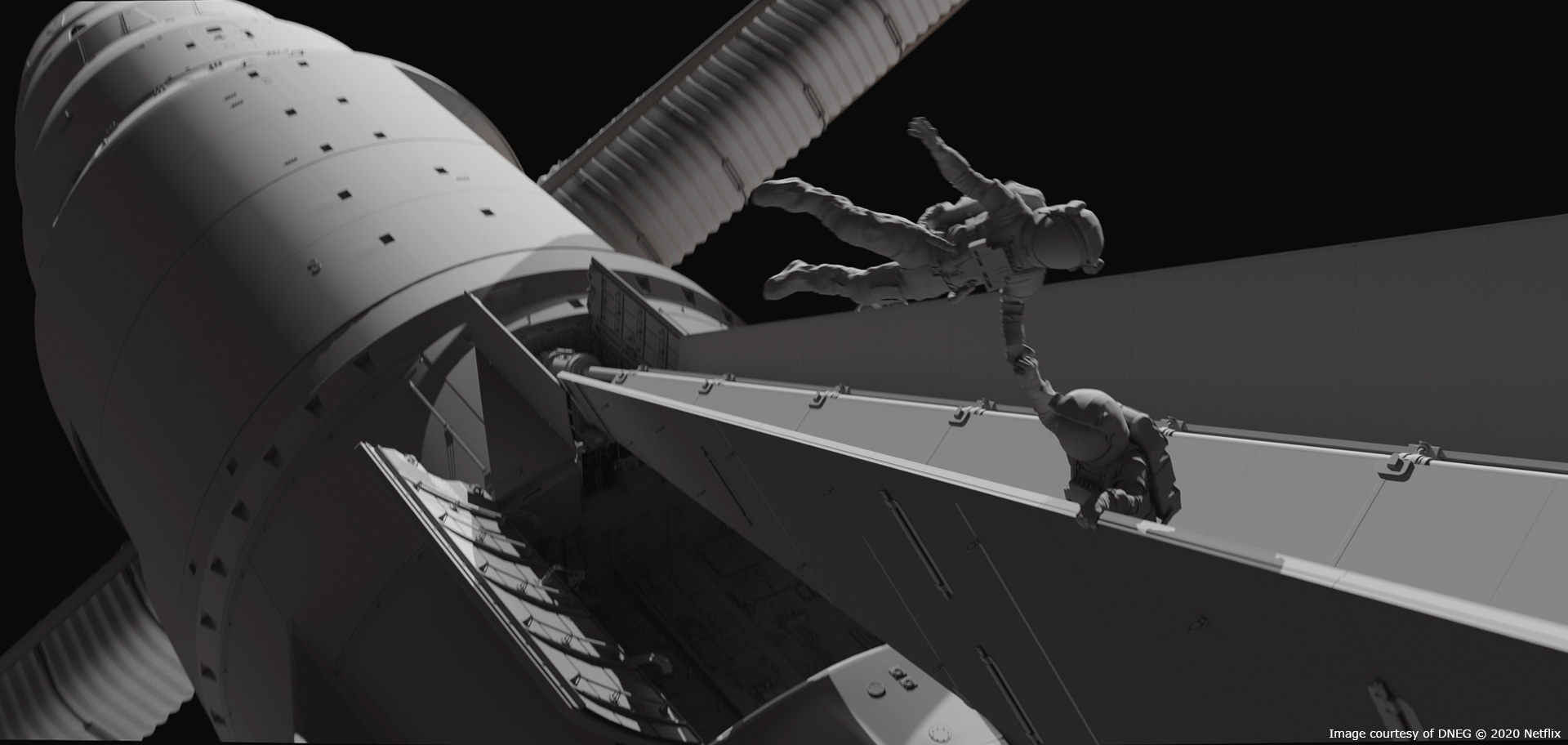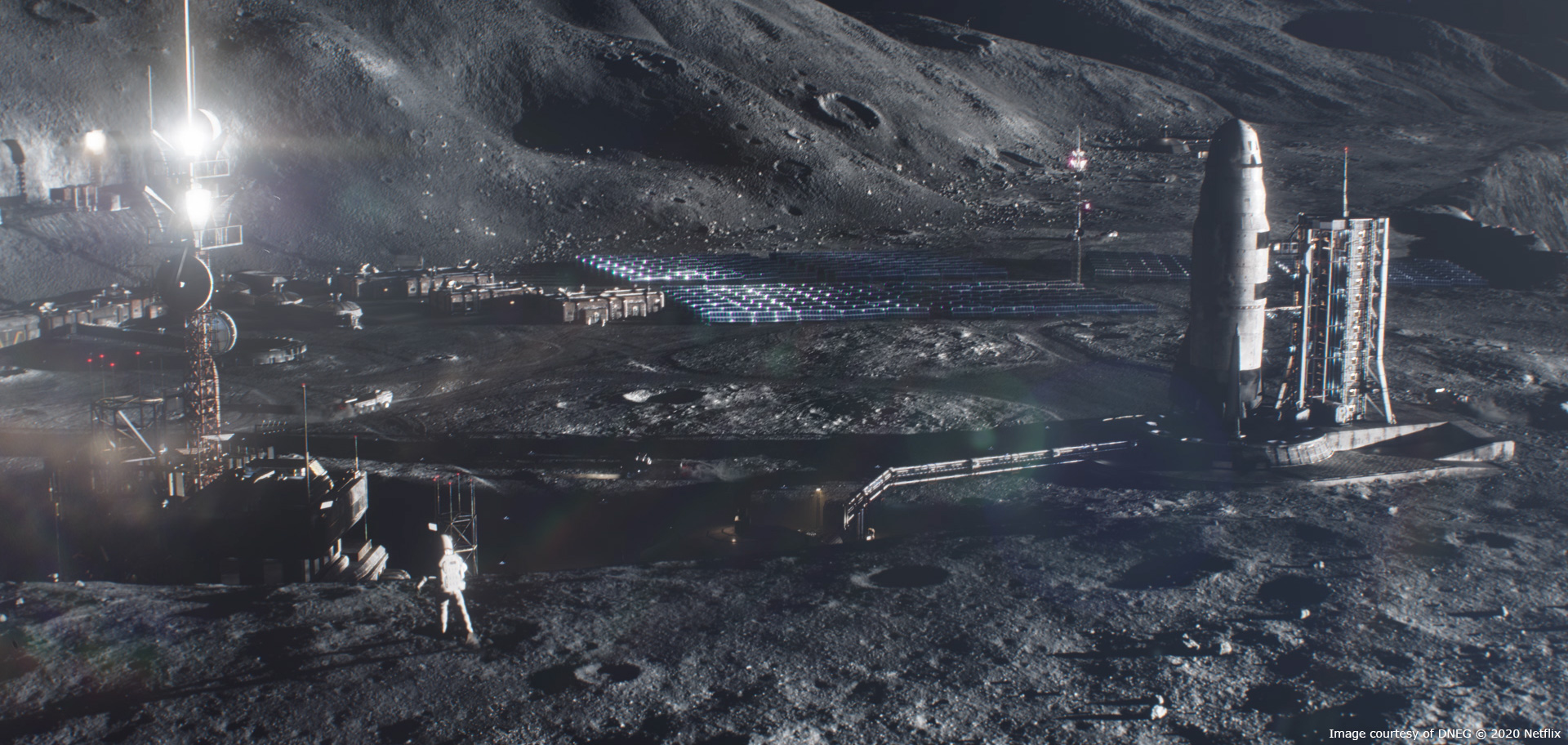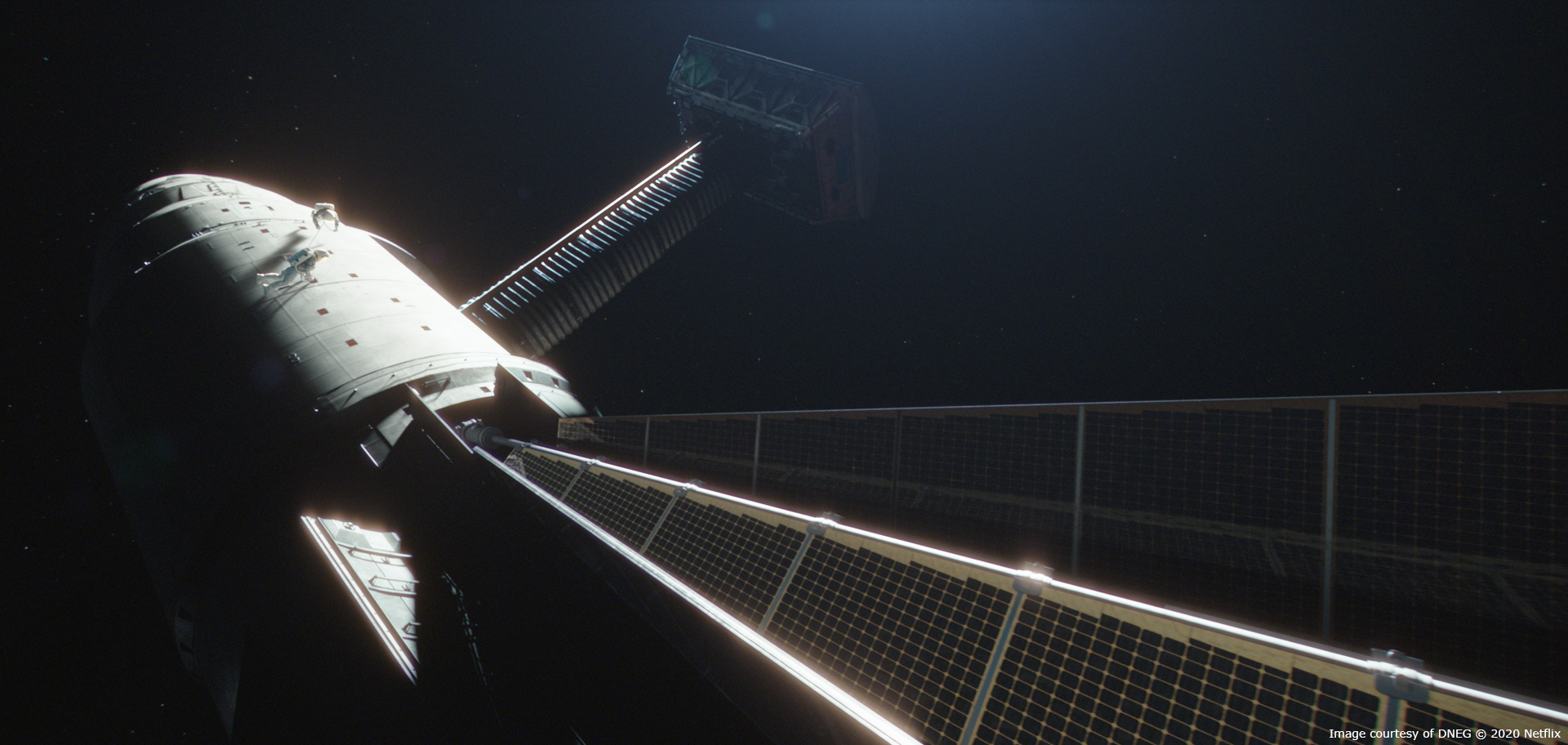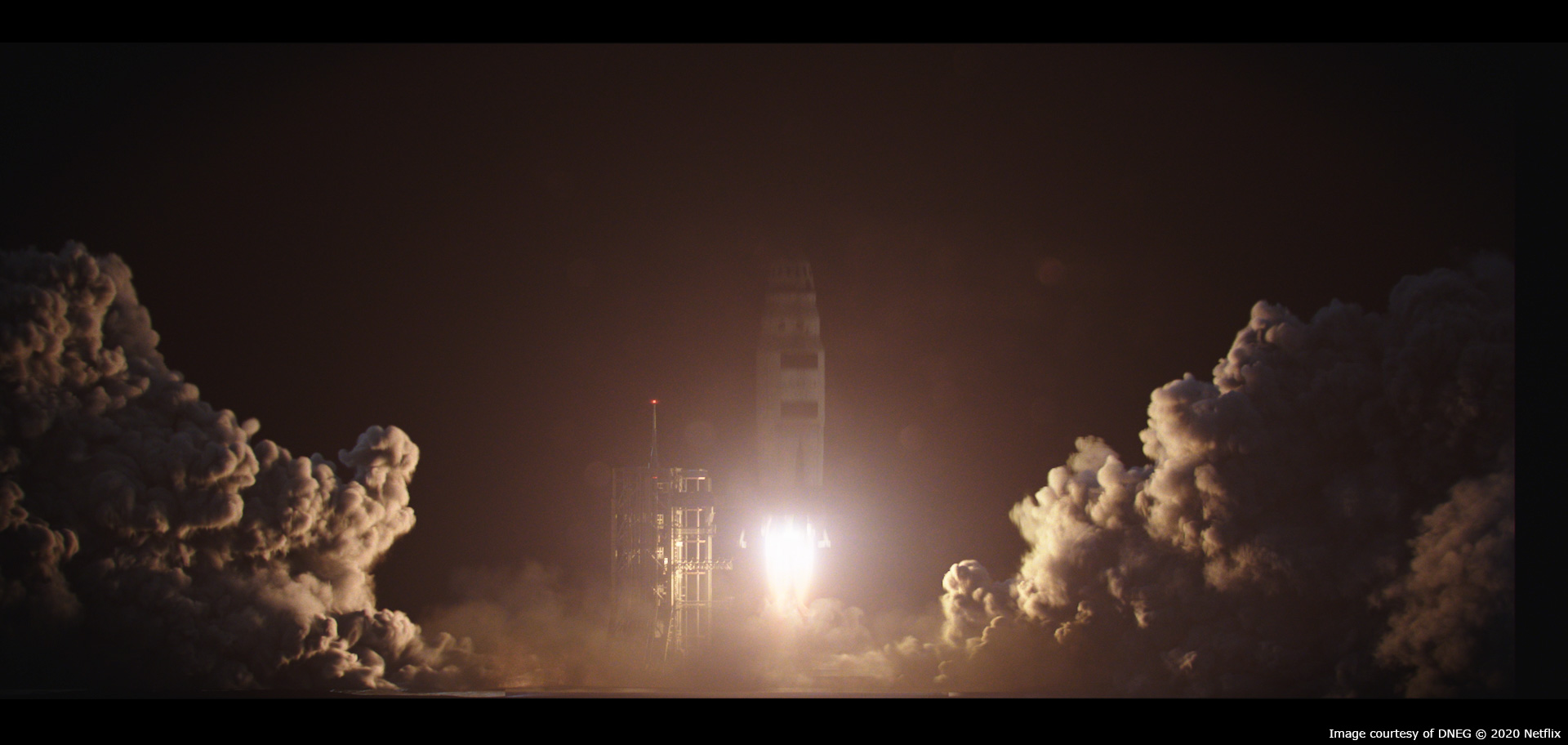Last year Oliver Atherton explained in detail the work of DNEG on THE KING. He is back today to take us into space and tell us about AWAY.
How was the collaboration with the various directors and VFX Supervisor Victor Scalise?
We worked directly with Victor Scalise. He was involved with all of the pre-production meetings and so all of the creative brief and creative feedback came from him. We started off with several early meetings just to discuss the overall concept of the show and look at some reference images and early designs that he had gathered and as they moved towards production we started to talk more about the methodology of how various sequences would be shot.
How did you split the work between the DNEG offices?
By sequence. It’s generally easier to let each site handle their own complete sequence of work for continuity and also for methodology. If you try to split things up too much you then waste a lot of time chasing continuity across the sequence. Our team in Chennai looked after most of the space walk sequence in Episode 02, including the digi visors, while the team in Vancouver did the work on the moon and rocket launch in Episode 01. Chennai also helped do some of the hero visor shots in Episode 01.
Vancouver set-up some of the full CG hero shots in Episode 02 since we were already developing the asset for our Episode 01 shots. There were then a few shots that were later shared or swapped between sites towards the end of schedule when time was tight and one team had some extra resources that could help out. One of the great advantages of having a global team is that we technically have people working around the clock in different time zones which means that you can keep shots progressing non-stop.
What are the sequences made by DNEG?
We worked on the rocket launch from the moon’s surface. Some of the moon base establishing shots and then some of the space walk shots in Episode 02. The work ended up being divided up between vendors, even with shots that cut back to back, so maintaining continuity in things like the visors became a challenge that we had to tackle.
How did you make use of DNEG’s experience working on shows such as FIRST MAN in regards to your work on AWAY?
Well, from the start we were confident that we knew how to create a photo real moon surface. Conceptually however, the two projects are in a completely different world. FIRST MAN was grounded in reality and felt very claustrophobic and pulled you into the experience of being on the moon. Visually it referenced the classic photography you see from the Apollo missions. The moon shots had bright single source lighting which embraced dark shadows and had a nice roll off towards the edges of frame. Camera angles were also tighter with more of a documentary feel and the moon surface didn’t have any buildings or structures on it.
On AWAY, while they wanted a certain level of realism we were also asked to stretch the bounds of that reality. We needed to create an entire working moon base to be shown in much wider shots. We are looking at the base from much further away and so had to design a fully CG environment that would work for that but also play well in closer shots. We also ended up with our final image being pushed into a more stylised direction because they wanted the base to have lots of light sources casting flares on the lens which lifted and flattened out the image, so it’s a very different look. The entire show also has a certain aesthetic and so our work ended up having to cut into that. Victor was very familiar with the lighting style, lens choices and camera moves that the DP would lean on so he was constantly trying to ensure that whatever we pitched from layout would not bump against the rest of the style of the show.
How did you work with the art department for the spaceship, the moon base and the suits?
By the time we were involved in the project most of the design decisions had already been made so it was simply a case of ingesting certain models from the production design team or other vendors and then building it out to work within our pipeline or to look a bit more real.
The moon base had been largely designed by the production team as well, so our work was about taking the design models and realising them into a fully 3D scene that the actors could interact with. We had a brief meeting with the production designer about the general look and feel of the moon base so that we understood what materials we were allowed to have in the moon base and we understood what structures we wanted to have placed up there. It needed to feel like a working moon base that had been established long before the start of the show.
The ship had to match the small piece of the set that had already been designed so our main concern was making sure that our set extensions would work. We mostly built out the bits of the rocket that needed to hold up in more detail for our own shots. The engines for the take off sequence and then the section of the ship that the actors move along during the space walk as well as the solar panels.
Many sequences happen on the Moon and Deep Space. How did you approach the particular lighting work?
Lighting in deep space can be really tricky. You have a single bright light source and no bounce light from Earth which results in a very high key image with virtually no shadow detail, so we did end up cheating some fill light. The solar arrays were also incredibly boring to look at when they were simply reflecting the empty darkness of deep space so we did quite a bit of beauty lighting to make sure they always looked interesting and had some movement in the light.
The first step was to have the lighters orbit some lights around the spacecraft for each set-up so that we could scrub through the rendered frames and pick a frame where the light was the most interesting at that angle. For the arrays we then had them move some lights slowly across the surfaces and render these out as secondary passes giving the comp team a range of lights to dial in to create the look and feel on a shot by shot basis. It was important to me that we feel the light moving across the surfaces in every shot to keep them interesting and remind the viewer that this craft is travelling through space. In some shots this meant we moved the camera and in others that were locked off we kept the lights moving just a bit.
Render times got pretty heavy due to the amount of indirect light bouncing around the spaceship surface and off the solar arrays creating lots of noise, so everything had to be rendered at very high samples at 4k and in some cases 8k then downsampled. We also leaned on our own internal de-noising workflow through Clarisse quite heavily.
Can you tell us more about the suits and digi double creation?
We did a series of scans on set during one of the shoot days of all of the spaceship crew as more of an insurance policy. We knew we would need them for the Episode 02 space walk but never planned to initially use them as hero assets. It is better to have the data just in case.
Once we got the scan data our build teams started to put the assets for Misha and Emma together so that we could use them in Episode 02. Our build supervisor pushed the assets along as far as he could within the scope of the budget. When it became clear that the team could create an asset that would hold up even closer to camera than initially planned within the same budget we became more confident in proposing that we replace the performance in more of the shots on the moon base to solve various issues ranging from light direction to performance of the wire-work.
How did you manage the challenge of the reflective visors?
It was actually a point of quite a bit of discussion early on. We decided to shoot the space suits with the visors removed and then add in fully CG versions. At least in any mid and close up shots where we see the actors’ faces. This allowed us to avoid having to remove unwanted reflections over faces which would be both time consuming and expensive. It also allowed us to then fully control what we see in each reflection – on the space walk we body tracked the actors performances and then reflected the CG space ship back into the visors. We could also then reduce the intensity of the reflection if we wanted to see more of the actors performance, or increase the intensity if we wanted to hide the fact we were using a stunt double.
For the closer hero visor shots on the moon base we made sure that our digi visors had lots of nice details in the material so that you can feel the physicality of the surface as the light combs across it to avoid it looking too CG. We did end up having another vendor do some of the close up visors in Episode 02 so we had to make sure that our work didn’t look too different from the look that they were able to achieve.
Can you elaborate on the Moon Base creation?
We had some initial production design sketches that were used as a basis for some early concept work. Once we had established the scale and size of what we would see across a range of shots we then set about creating a moon surface with more detail in the areas that played closer to camera. This was mostly just sculpting based on observing reference images and then scattering various pieces of rock debris around and then finally a few passes of beauty work in shot once everything was locked down. Many of the base building assets were provided to us and would not hold up too close to camera, so had to be kept at the back of the frame or in the dark.
We then designed a whole range of different layouts / camera setups for each of the shots. Victor wanted the early stuff to play out in a series of wides to establish the moon base with Emma looking down on the whole operation, before later bringing things closer into the actual base as she approaches the habitat.
How did you manage the various zero G shots?
These were initially done practically with wire-work on set. We were later asked to fix a number of shots where the wire-work wasn’t quite so successful, but for the most part this was all achieved as practical performance with wire / rig removals.
Where were the sequences filmed for the Moon?
The Moon was shot on a sound stage in North Vancouver. There was a little wooden sloped platform scattered with some sand and rocks in a black box environment and then lit with a single light source. Because we knew we could do a very good looking moon surface in CG we knew we would most likely completely replace this instead of trying to match or enhance it – but it provided a great reference and most importantly allowed for the correct amount of natural bounce light from the floor onto the actors’ suits.
Which sequence or shot was the most challenging?
All shots have their own challenges. Sometimes it’s the easiest ones that trip you up for a variety of reasons. For example, one of our visor hero shots became quite problematic because of how the practical spacesuit was designed and the methodology that worked across a dozen shots suddenly needed a rework for this one particular shot because Emma had to now open a sun visor.
The spacewalk for the most part was pretty straight forwards once we got the workflow setup. Camera tracking the practical set, body tracking the actors for visor replacements, CG tethers and also their shadows and reflections into the ship’s surface. The solar arrays were pretty challenging from a technical point of view but once we got them rendering cleanly it was plain sailing.
Is there anything specific that gave you some really short nights?
The moon base was probably the most time consuming from a creative perspective. Technically, we had a moon surface set-up that we could render very quickly and that looked great from any angle and camera distance, but it did require some in-shot tweaks for each setup to get it to the level we expect from ourselves. We also ended up losing quite a bit of time in layout on all of these shots moving the cameras around or adjusting framing which meant we got into the finishing work much later than planned. The lighting also made a huge difference. They had to match the light direction of the practical on set lighting, but the smallest changes to light direction could suddenly cast unwanted shadows over areas we wanted to be visible. They were all pretty big wide shots as well so each one went through quite a number of iterations before a look was finally established and we could then progress them to a place that everyone was happy with.
What is your favourite shot or sequence?
Without a doubt the shots where we watch the rocket take off from the moon’s surface. Both the wider shots of the crew on the surface of the moon while Emma gives her speech and the shots where the rocket launches. The wider shots have a nice rear side light which always looks great and allows us to sit our CG into things very naturally. These were fully CG environments built around the practical on-set lighting on the actors. I think these ones came out really nicely and felt quite natural.
The launch shots are also great because they were the only shots that – despite not being realistic to the physics of what you would see on the moon – they wanted something that was based on real reference footage. So it was nice to be able to research footage of rocket launches and talk about which bits we wanted. Creatively and editorially we got very clear direction on what these needed to look like and so the process was just about getting the work done to the highest level we could in the time given. We had great FX artists on each of the shots. James Fleming did all of the close up ignition shots for us. He is a very detailed artist and focused on producing each of smaller elements that built up into the launch matching reference as closely as possible and constantly suggesting things from his own research. Mike Rhone then worked on the wider launch shots creating the iconic smoke plumes that billow out. Because we were able to quickly lock down a clear brief it allowed us to just focus on creating some good looking shots and the end result is something that ultimately feels real and looks great.?
A big thanks for your time.
AWAY – VFX BREAKDOWN – DNEG
WANT TO KNOW MORE?
DNEG: Dedicated page about AWAY on DNEG website.
Netflix: You can watch now AWAY on Netflix!
© Vincent Frei – The Art of VFX – 2020


